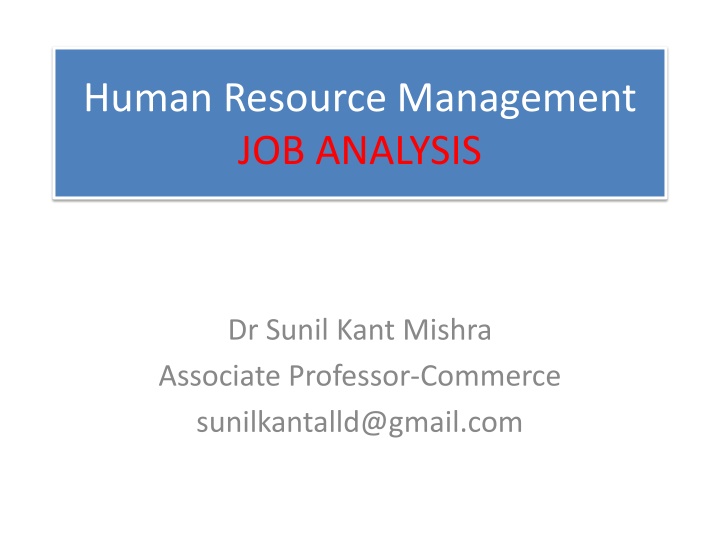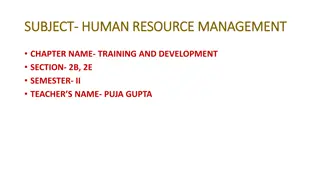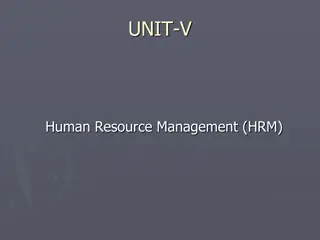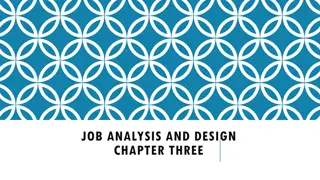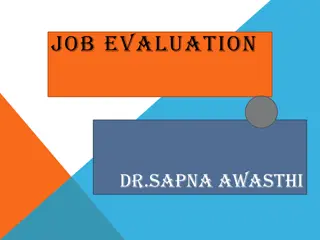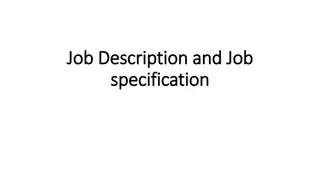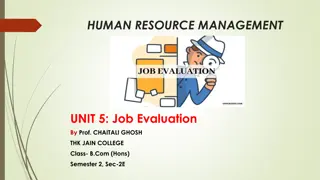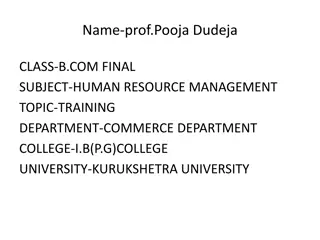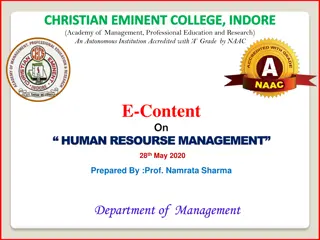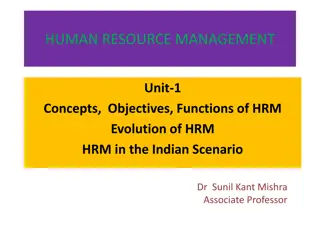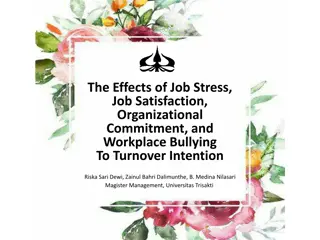Job Analysis in Human Resource Management
Job analysis is crucial in HR management to determine the quantitative and qualitative requirements for different positions within an organization. It involves analyzing the nature and requirements of jobs to identify the necessary personnel skills and qualities. The process helps in effective manpower planning by classifying work into data, people, and things-related functions, and understanding job, position, task, duty, and occupation distinctions.
Download Presentation

Please find below an Image/Link to download the presentation.
The content on the website is provided AS IS for your information and personal use only. It may not be sold, licensed, or shared on other websites without obtaining consent from the author.If you encounter any issues during the download, it is possible that the publisher has removed the file from their server.
You are allowed to download the files provided on this website for personal or commercial use, subject to the condition that they are used lawfully. All files are the property of their respective owners.
The content on the website is provided AS IS for your information and personal use only. It may not be sold, licensed, or shared on other websites without obtaining consent from the author.
E N D
Presentation Transcript
Human Resource Management JOB ANALYSIS Dr Sunil Kant Mishra Associate Professor-Commerce sunilkantalld@gmail.com
Man Power Planning Quantitative Requirements No. of people required to undertake work Qualitative Requirements Kind of skills/ qualities required to do work. Detailed knowledge of the nature and requirements of JOBs to be filled is essential for determining the kind of personnel required. Such Knowledge can be obtained through the process of Job Analysis.
Organisations Primary Functions WORK can be classified in three categories Data People Things
DATA related works -Synthesizing -Co-ordinating -Analyzing -Compiling -Computing -Copying -Comparing
People related works Monitoring Negotiating Instructing Supervising Persuading Speaking Signaling Directing Serving and tasking instructions
Things related works Setting up Precision working Operating Controlling Driving Manipulating Feeding off Handling Greasing Oiling
JOB, POSITION, TASK, DUTY, OCCUPATION Job as a group of positions involving substantially the knowledge and responsibility. When the total work to be done is divided and grouped into packages, it is called a JOB . Each JOB has a title/ code It is impersonal. JOB is a group of positions. A Job includes many positions. same duties, skill,
Position Position It is collection of tasks and responsibilities regularly assigned to one person (an individual). Position is a particular set of duties assigned to an individual. JOB is IMPERSONAL while POSITION is PERSONAL
Task: undertaken with a view to complete specific objectives. It is a special work action which is Duty: It is aggregate of several grouped tasks. Occupation: it is related to positions having similar nature of works and group of tasks. e.g. Accounting, Typing, Storage
What is JOB Analysis Job Analysis is a detailed and systematic study of jobs to know the nature and characteristics of the people to be employed on various jobs. Collection or aggregating of tasks, duties, responsibilities which as whole regarded as a regular assignment to individual employees. is
Dale Yoder- Job Analysis is the procedure by which the facts to each job are systematically discovered and noted. E. Flippo - Job Analysis is the process of studying and collecting information relating to the operations and responsibilities of a specific job.
Content Of Job Analysis Job identification Significant characteristic of a Job What the typical worker does? Which materials and equipments a worker use? How a job is performed? What personnel attributes are required?
Process of Job Analysis An organisation is required to make atleast five choices: 1. Extent of employees involvement in JA 2. Level of details of JA 3. Timing and frequency of analysis 4. Past oriented versus future oriented JA 5. Source of Job Data
Process of Job Analysis Selecting Job for analysis Collecting of relevant information Processing of information Preparation of Job Description Preparation of Job Specification Presentation and Approval
Purpose of JA Job Analysis and Job Specification are useful for: HRP Recruitment and Selection Training and Development Job Evaluation Remuneration Performance Appraisal Personal Information Safety and Health
Methods of Collecting Job Data Observation Interviews Record method Critical incidants Checklist Questionnaire Diary Technical Conference
